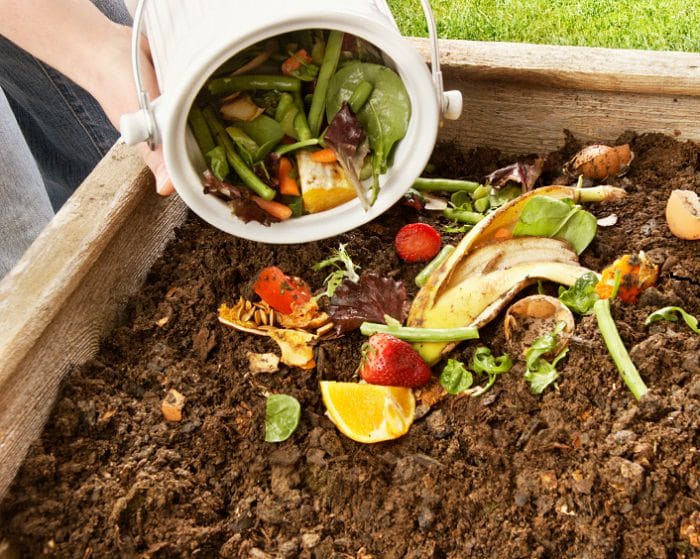Learn composting with this 4 step COMPOSTING guide and make your own compost!
For thousands of years, gardeners have been using the rich nutrients found in organic matter to boost the health of their flower beds, shrubs, and lawns. At times, composting can be smelly, unsightly, and a bit of chore (especially in winter, when you have to run outside in your socks to compost kitchen scraps). However, if done correctly, the level of effort is minimal and the rewards rather delightful.
A lot of inexperienced gardeners are put off by the notion of composting because they don’t want food and garden debris rotting in a corner of their yard. Yet, this is easily rectified with the use of a special composting bin or container. These are very cheap to buy and create a dedicated, hygienic space for all of your valuable waste.
If you have never composted before, you’ll be amazed at how easy it is. Just follow the four step process outlined in this simple composting guide.
Step One: Set up the Compost Bin

First things first; you need to allocate an area of your garden for composting and get yourself a suitable container. One of the best reasons to compost is because it does wonders for the health of the garden plants and your lawn. If combined with a high-quality lawn seed, you’ll have the best grass on the block in no time.
You can, essentially, create a compost bin or container from almost anything. The important points are that it must allow air to circulate and provide easy access to the compost once it is ready to be used. While ‘bin-less’ composting is just as effective, it can end up attracting all kinds of pests, so it is not advised, especially in small urban areas.
Also Read: Composting in an Apartment Balcony
Step Two: Gather Your Tools
Composting is a really inexpensive activity. You probably already have a suitable container lying around the house somewhere and everything else is non-essential. You probably do want a pair of thick gardening gloves for comfort, though, because handling compost is not always nice.
It is useful to have an aerator as well because it creates air pockets within the compost pile and encourages oxygen to circulate. You can buy a special tool, but ultimately, anything kind of long stick will do – a pitchfork works perfectly. Check that you have a shovel in the shed or garden that can be used for taking the compost out of the container.
Step Three: Start Adding to the Pile
Now, you’re ready to start composting. The trick is to make it a normal and effortless part of life. It is something that should become second nature. Instead of throwing kitchen scraps out for landfill, take them outside to the pile. There are certain things that you should never compost, so take note of the following items. Here, in this article you can read about things you should avoid composting!
Suitable waste includes grass clippings, hay, tea bags, coffee grounds, eggshells, leaves, wood chips, fruit and vegetable peels, and paper. Unsuitable items include pet waste, treated wood, animal bones, cooking oils, cooked ingredients, meat, treated paper, and dairy products. You don’t want anything in your bin that is unhygienic to be around during decomposition (meat is a good example).
Step Four: Wait for the Compost to Be Ready
Your access point to the container should allow you to reach the bottom layer because this is the stuff that will be ready to use first. You can cut a flap out of a plastic bin or buy a container that already has one. The bad news is that a compost pile takes around twelve months to fully mature and become a useful addition to lawns and flower beds. The good news though is that you don’t have to do anything but keep adding the right stuff to it.
Also Read: Best Composting Tips You Should Read
Why Composting is a Dream for Your Lawn
The organic waste that we produce – primarily from the foods that we eat – contains a huge amount of minerals and nitrates. These are essential for the healthy growth of plants and, rather than consigning them to the landfill, a simple nightly trip to the bottom of the garden gives them a second lease of life. Worries about odour and hygiene are not necessary, because of healthy, properly maintained compost piles do not have a strong or unpleasant smell.
 SunshowerOnline is Melbourne’s garden lighting and irrigation specialists. With decades of experience and a reputation for delivering exceptional service, we are here to give you the information and advice required to make your garden award-worthy.
SunshowerOnline is Melbourne’s garden lighting and irrigation specialists. With decades of experience and a reputation for delivering exceptional service, we are here to give you the information and advice required to make your garden award-worthy.






